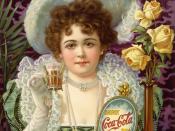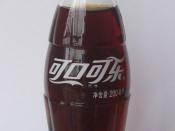Coke and Pepsi in China: Coca-Cola originally entered China in 1927, but left in 1949 when the Communists took over the country. In 1979, it returned with a shipment of 30,000 cases from Hong Kong. Pepsi, which only entered China in 1982, is trying to be the leading soft-drink producer in China by the year 2000. Even though Coca-Cola's head start in China has given it an edge, there is plenty of room in the country for both companies. Currently, Coca-Cola and Pepsi control 15% and 7% of the Chinese soft-drink market respectively. The Chinese market presents unique problems. For example, 2,800 local soft-drink bottlers, many of whom are state-owned, control nearly 75% of the Chinese market. Those bottlers located in remote areas have virtual monopolies (The Economist, 67). The battle for China will take place in the interior regions. These areas are unpenetrated as most of the foreign soft-drink producers have set up in the booming coastal cities.
China's high transportation and distribution costs mean that plants must be located close to their markets. Otherwise, in a country of China's size, Coca-Cola and Pepsi risk pricing their products as luxury items. In China, it is easier and politically safer to expand through joint ventures with local bottlers. It is expected that, in China, the company that wins the cola war will win based on the locations of their bottling plants and the quality of the partners they choose (The Economist, 67). Coca-Cola is bottled at 13 sites across China; five of these are state-owned. Also, Coca-Cola owns 2 concentrate plants in China. By 1996, Coca-Cola and its joint venture partners will have invested nearly $500 million in China. Pepsi is planning a $350 million expansion plan that will add 10 new plants. Both companies are plowing profits straight...


